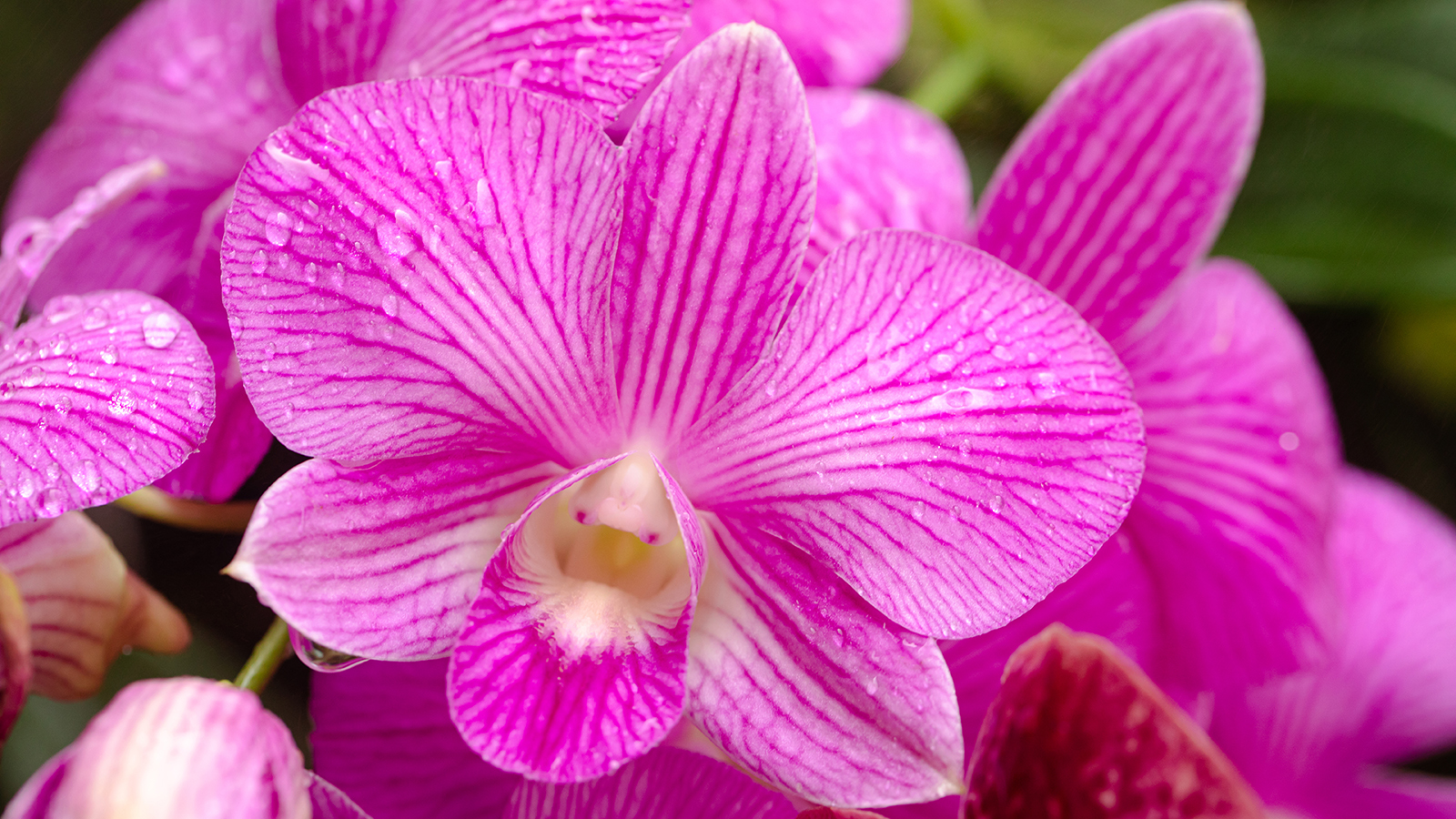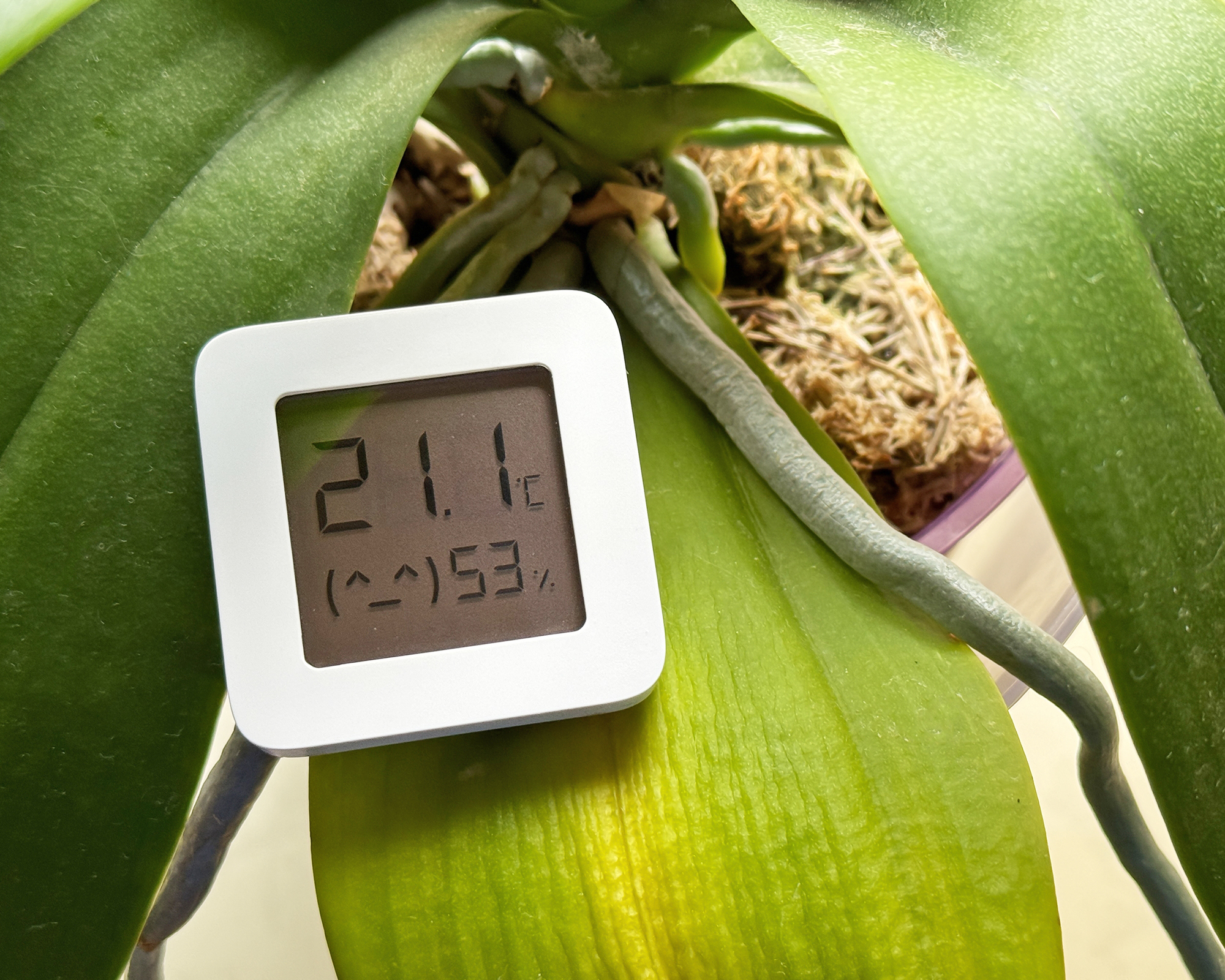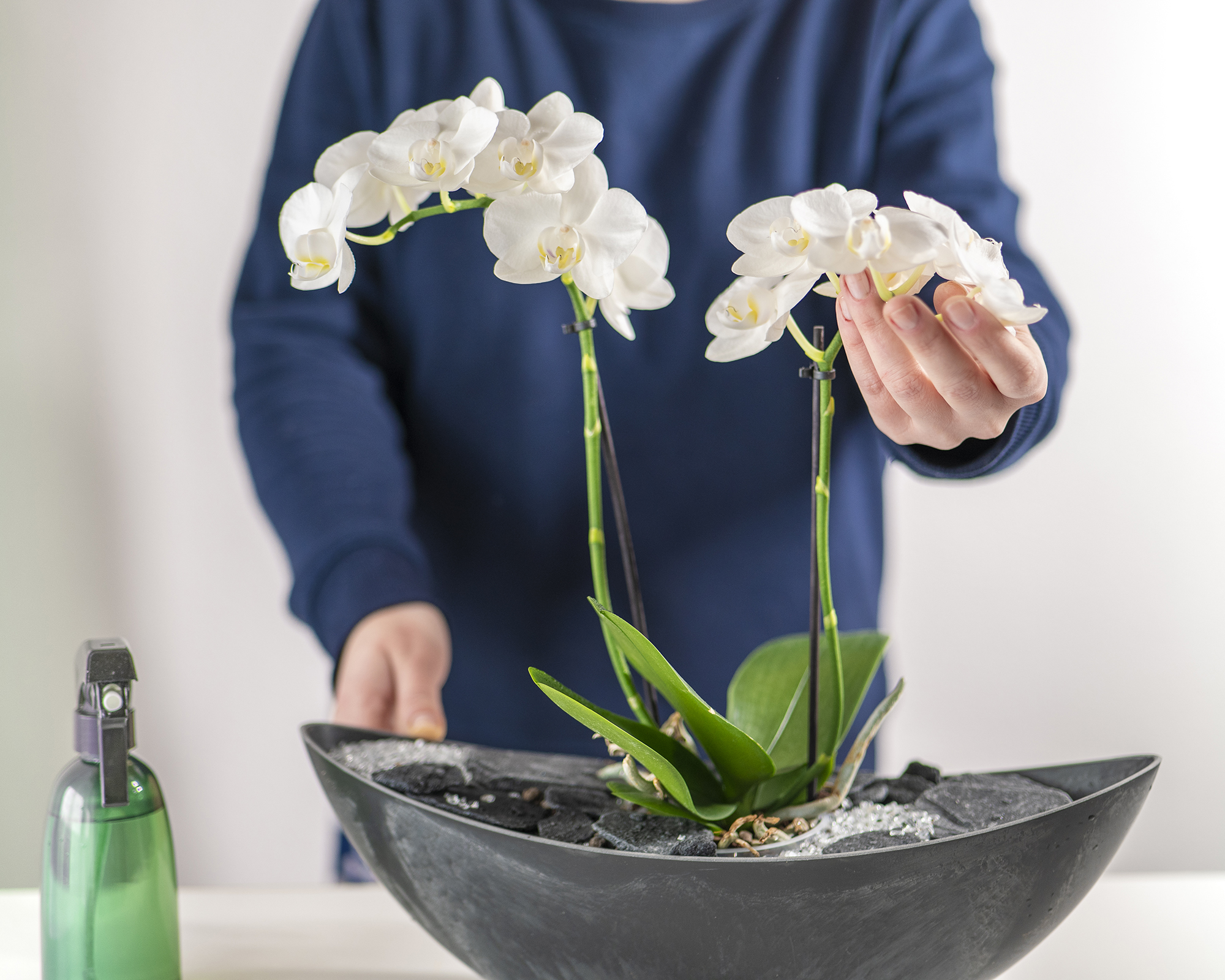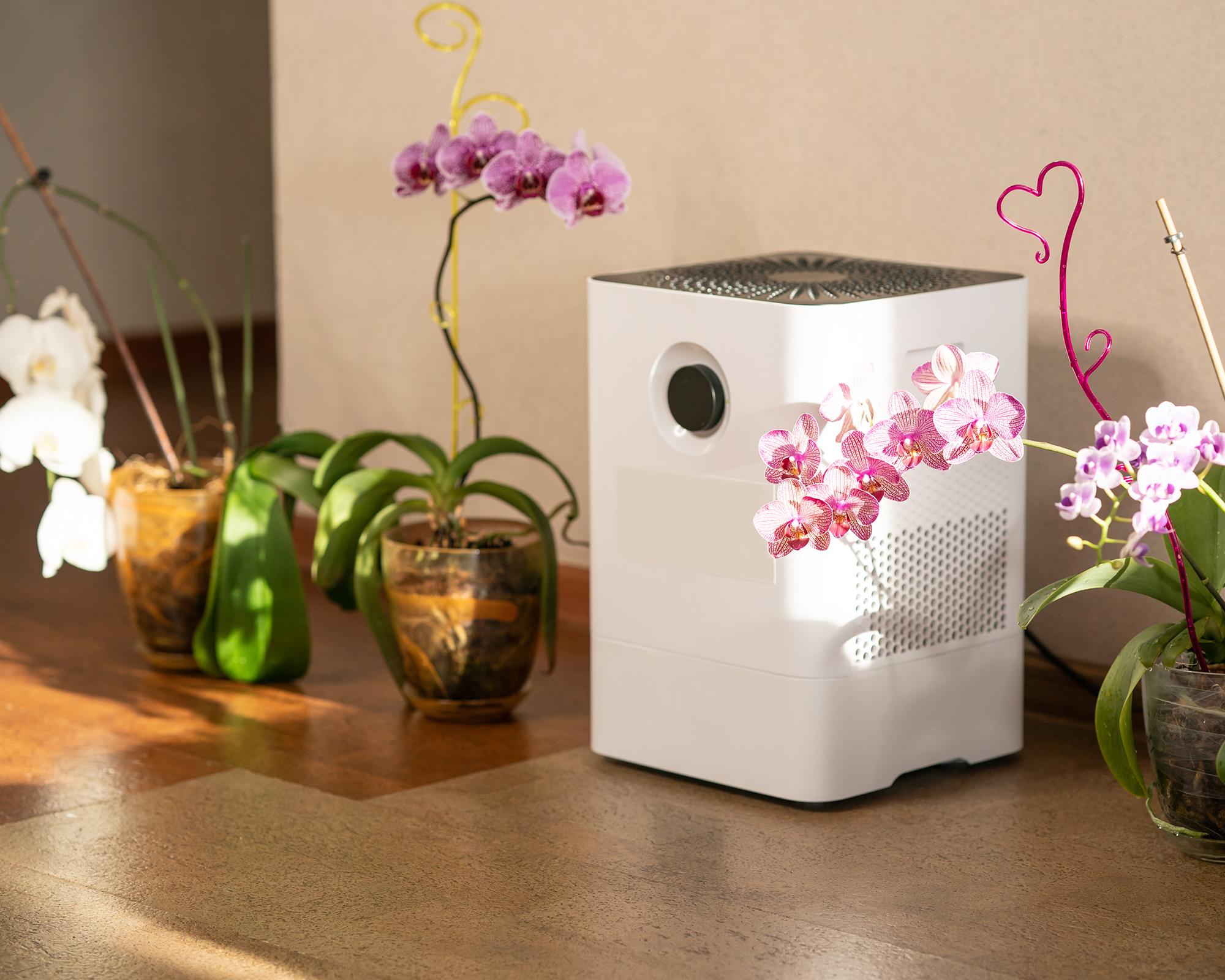How Much Humidity Do Orchids Need To Thrive? – Plus Tips To Boost Moisture Levels
Learn how much humidity your orchids need and easy techniques to increase moisture levels for happy and healthy plants with more vibrant blooms.


Orchids are prized for their exotic blooms, but achieving healthy growth can be a delicate balance. The plants require regular watering, fertilizing, and compatible light and temperature levels.
In particular, knowing how to water orchids – and how often to do it – can seem a confusing aspect of orchid care, with hacks such as watering orchids with ice cubes devised to make the process easier. Indeed, getting moisture levels wrong is one of the most common orchid care mistakes.
However, in addition to watering plants correctly, humidity plays a crucial role in their well-being.
Do Orchids Like Humidity?
Yes, orchids do like humidity and thrive in moist environments that mimic their natural habitats. Most orchids, especially those grown as houseplants, are tropical epiphytes. They evolved to grow in warm, moist climates. Rather than growing in soil, the roots are exposed to the air, which must be humid enough for the orchid roots to absorb an adequate amount of water. Conversely, terrestrial orchids get most of their water through the soil.
Some types of orchids can tolerate less humidity than others, while no plants should be grown in 100% humidity.

How Much Humidity Do Orchids Need?
There are many different types of orchids, but most are tropical and native to ecosystems with high humidity. Virtually all orchid types will grow best with humidity between 40% and 70%. This is a good benchmark for growing almost any orchid as a houseplant, but there are some variations by type:
- Phalaenopsis – or moth orchids – are tropical epiphytes, meaning they live on tree branches without soil. The roots get moisture and nutrients from the air. As houseplants, these orchids should have a minimum of 50% humidity to thrive and bloom.
- Vanda orchids make up a genus of about 80 species of tropical epiphytes. They are fussier and, therefore, less popular than moth orchids as houseplants. They need a minimum of 65% humidity in the air to grow well.
- Cattleya orchids are widely hybridized – you’ll find many different forms and colors of cattleya houseplants. A minimum of 50% humidity is ideal for this tropical epiphyte.
- Dendrobium is a large genus of epiphytes that can be deciduous or evergreen. As houseplants, they tend to be top-heavy with flowers and require staking. They tolerate less humidity better than other types of orchids. Ensure your dendrobium orchids get at least 40% humidity.
- Paphiopedilum – or slipper orchids – are named for their characteristic shape that resembles a delicate slipper. These orchids are terrestrial rather than epiphytic, growing on the tropical forest floor. A minimum of 40% humidity is required.
- Miltonia – or pansy orchids – resemble pansies in that they have face-like features. They are tropical and epiphytic. They need at least 40% humidity to grow well.
- Miltoniopsis is a type of reclassified pansy orchid, and it's important to know whether you have this variety. Miltoniopsis grow at higher elevations and require more moisture. They need at least 60% humidity. Although officially reclassified, many growers still refer to both types of pansy orchids as Miltonia.

What Happens to Orchids That Don’t Have Enough Humidity?
Because they do not get moisture from the soil, orchids will struggle to thrive or even survive if humidity levels in the air are too low. Even the most hard-to-kill orchids will begin to lose more water than they take in and will dry out.
Sign up for the Gardening Know How newsletter today and receive a free copy of our e-book "How to Grow Delicious Tomatoes".
It’s easy to tell if your orchid is too dry. The leaves and roots will look shriveled and wrinkled rather than plump. Another sign of low humidity is deformed flower buds.
An orchid will not necessarily die if humidity levels are less than optimal, especially if only slightly. However, lower humidity levels will make it less likely that your orchid will bloom again.
Lack of blooming is a common complaint among new growers, and it can be addressed by ensuring an orchid has all of its ideal conditions met, including humidity.

How Can I Increase Humidity for My Orchids?
Humidity can be a serious issue when growing orchids as houseplants. The air in the home tends to be dry, with humidity as low as 25%. Winter is especially challenging, as heating systems pull moisture out of the air. In summer, air conditioning can also cause low humidity.
It is not impossible, however, to provide orchids with more humid air in the home. One of the easiest ways to raise humidity levels right around a plant is with a pebble tray. Fill a shallow tray with pebbles or rocks and add water. Set the plants on top of the rocks. The water will evaporate and raise the humidity level in the air immediately around them.
Another solution is to use a humidifier. Again, this should be near the plants. Humidifiers can raise humidity too high, which can cause different problems from dry air. One issue is that water collects in the leaves of the orchids. This can lead to crown rot. If using humidifiers, consider also using a fan to circulate the air around the plants.
You might be tempted to spritz your orchids with water to address their humidity needs, but this isn’t the best solution. Spraying only temporarily raises humidity levels, and it can cause water to collect in the leaves.
However you address humidity, a simple tool can help you maintain the ideal percentage for your particular type of orchid. A hygrometer measures humidity and can be found in garden centers. Keep it near your orchids to monitor humidity levels and make adjustments as needed.
Orchids love humidity, which can present a challenge when growing them as houseplants. It’s not difficult, though, to monitor and increase humidity as needed. Get the humidity right, and you should enjoy many years of blooms.

Mary Ellen Ellis has been gardening for over 20 years. With degrees in Chemistry and Biology, Mary Ellen's specialties are flowers, native plants, and herbs.
- Melanie GriffithsEditor in Chief
- Amy DraissDigital Community Manager